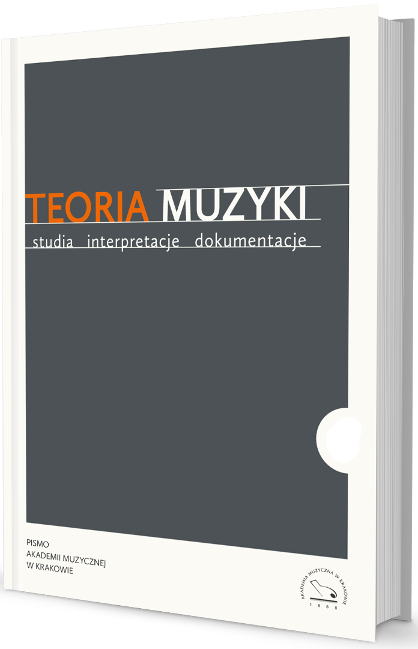Kwartet na… Wokół inspiracji i znaczeń programowych w kwartetach smyczkowych Zbigniewa Bujarskiego
Quartet for… Of programme inspirations and concepts in Zbigniew Bujarski’s string quartets
Author(s): Ewa WojtowiczSubject(s): Music
Published by: Akademia Muzyczna w Krakowie im. Krzysztofa Pendereckiego
Summary/Abstract: The quartet compositions by Zbigniew Bujarski include four works. The first three date back to 1980s: Quartet for a House-Warming (1980), Quartet for Advent (1984), Quartet for Easter (1989); the fourth, Quartet for Autumn, was written in 2001. The author entered the quartet genre as a mature composer. The emergence of an individual style was initiated by Musica domestica for strings (1977). Bujarski willingly composes for string instruments, claiming that “there are no better, more noble instruments”. The catalogue of his work consisting of 38 compositions, a third of the pieces are for strings. The composers speaks of the string quartet as of his “favourite ensemble, which ensures the intimacy of sound”, “a personal, internal” group.Quartet for Easter is the only one whose genesis does not include any external causative impulses. Two quartets were commissioned: one had an official nature – Quartet for Advent added splendour to the 60 th anniversary of the Polish Society of Contemporary Music, and the other was personal – Quartet for a House-Warming was written for Krzysztof Penderecki for the 1 st Festival of Chamber Music held in 1980 in the Lusławice manor on the occasion of its inauguration. Quartet for Autumn is dedicated to Mieczysław Tomaszewski on the occasion of his 80 th birthday.Bujarski’s quartets contain certain references beyond music, suggested in the programme titles and sometimes in commentaries. All titles were constructed according to the same linguistic pattern: “quartet for”. The preposition usually indicates a certain time period: during the liturgical year – Advent, Easter, or the cycle of seasons – Autumn. The title of the first quartet refers to a specific event – “a house-warming”. The titles suggest certain ideas focused around two spheres of meaning. The first is related to religion. Advent, in the Catholic church a time of purification preceding Christmas, also stands for the expectation of the Christ’s second coming. This aspect of permanent waiting is emphasized by the composer in the commentary to his work. Bujarski’s second “religious” quartet contains elements of Passion. Its four parts were primarily titled (not present in the score) Crucifixio, Pietá, Hosanna, and Resurrectio. The second sphere of meanings is connected with the human condition: his longing for a place he would want to live in (a concept of home) and experiencing the passing of time, transition (the autumn metaphor).The programme quality of Zbigniew Bujarski’s string quartets is allusive, symbolic, and their frugal means are discreet but suggestive. In Quartet for a House-Warming, the euphonic enclaves in dissonance harmonics announce the melody with carol-like intonations at the end. In Quartet for Advent, the opposition of static sections (signifying expectation) to dynamic ones is important. In Quartet for Easter, the contrast between darkness and light on the cycle level serves as the primary means of the programme. After the first two parts (Crucifixio, Pietá ), dominated by a low register and a thick texture, a third part proceeds, bright and maintained in a high register (Hosanna). The temporary harmonic brightenings are significant in Quartet for Autumn, especially the final one, referring to a suggestive illustration of the passing of time in the form of regularly pulsing repetitions.
Journal: Teoria Muzyki. Studia, Interpretacje, Dokumentacje
- Issue Year: II/2014
- Issue No: 4
- Page Range: 71-87
- Page Count: 17
- Language: Polish

